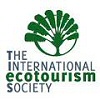Australian Natural Adventures
nature travel, wildlife tours, adventure travel and
general travel to Australia, New Zealand and the Pacific
Fiji History
This first part is the same as on the Map page, so if you've read that, skip to the second paragraph.
Prior to European influence, the earlier inhabitants referred to their islands as “Viti”. The term “Fiji” is actually derived from the Tongan name for the islands. The Polynesian, Melanesian and some Micronesian influences have predominantly shaped Kai Viti or Fijian culture. The first recorded dwellers were the Lapita people (about 3500 years ago) who were coastal dwellers and potters. Remnants of their settlements can be found at the Sigatoka Sand Dunes National Park, where pottery shards and bones were discovered and is now an important archeological site. A number of these pieces are on display at the Fiji Museum in Suva. After about 1000 years, settlements moved inland as more population arrived and an agrarian culture began forming. During the next 1000 years, Fiji was subjected to Samoan and Tongan influences. Fijian society developed around, and is still based on, extended family groups known as mataqali (pronounced: matangali) headed by hereditary chiefs or turaga ni koro (pronounced: toorunga nee koro). This arrangement led to rivalries among heirs and armed conflicts between factions. Examples of cultural development and implements of war can also be seen at the Fiji Museum. The first European visits were credited to Abel Tasman and his convoy in 1643. But this description of the treacherous reefs surrounding the islands kept other sailors away. About 1774, Captain Cook stopped at islands in the southern Lau Group. Yet, his description of the fierce warriors kept outside influences to a minimum for the next century with one notable exception. The infamous Captain Bligh, during his epic voyage (with his crew after the mutiny) sailed westward through Fijian waters. Barely escaping two war canoes, he sailed between Viti Levu and Vanua Levu in waters that today bear his name - Bligh Water. Throughout the 18th and 19th centuries, Fiji was slowly opened up to commerce and trade with Tongans (weapons, masi cloth and highly valued bird feathers); Europeans (sandalwood); Asians (beche de mer); whalers and beachcombers. By the early 1830’s, the chiefdom of Bau (off the eastern shore of Viti Levu) through trade and force was beginning to gain control over the islands. Though rivalries with Tongan chiefs posed a threat in the east, Chief Tanoa consolidated his power on Viti Levu and many outer islands. Also in the mid-1850’s, missionaries were slowly but surely making inroads into the islands. When the paramount chief of Bau, Cakobau (pronounced Thakumbau), accepted Christianity, he thereby strengthened his position with Tongan allies. While many Fijians adapted the new western religion, they still worshipped their own deities and ancestor spirits. Around this time, a whaling station was established at Levuka on the islands of Ovalau. As the settlement grew, so did the influence of Ovalau as a base for Cakobau. But the varying foreign influences proved a strain on political and strategic alliances. This culminated in an unfortunate incident between an American expeditionary force and the Fijians in 1848. For the next 20 years, rivalries and conflicts were promulgated with “black-birding” as one of the main outcomes. Various attempts were made to establish a unified government but these broke down for a variety of reasons. Fearing that Fiji was in a vulnerable position due to internal struggles and outside pressures, Cakobau ceded the islands to the British rather than any other power. The cession was held at Levuka town on Ovalau on 10 October 1874. A stone marking that event can be visited in town. Due to the physical limit of expansion around Levuka, the capital was moved to the main island and its present site at Suva in 1882. The second Governor General, Sir Arthur Gordon, was the architect of a system of administration, which incorporated existing Fijian cultural hierarchy, resulting in land being retained by indigenous owners in perpetuity. Fijian communities own about 85% of the land. It was also during this period that the British brought workers from other parts of their empire (especially India) to Fiji. Today, the descendants of those labourers are a thriving part of the Fijian landscape and contribute greatly to the culture and economy of the country. Through the first half of the 20th century, Fiji has had many forms of government. After WW2, the notion of a democratically elected government was gaining precedent. The early 1960’s saw the formation of a ministerial government with voting rights for women, political parties and a move toward Over the past four decades, Fiji has undergone the normal growth pains of a politically developing nation. Without dwelling on particular events, Fiji has adopted a new constitution in 1990, new parliament, declared itself a Republic and is a member of the British Commonwealth. Recent political events in 2000, led to political unrest that had a sizable impact on Fiji. Tourism was particularly affected as visitor arrivals from major markets severely declined. With the resolution of the crisis, Fiji has returned to political stability.
|



